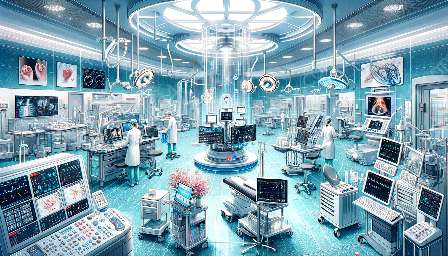Bacterial biofilms present a significant challenge in the field of medicine, particularly in relation to medical devices and infections. To understand and effectively manage biofilm-related issues, the interdisciplinary field of biophysics plays a crucial role. This article aims to discuss the role of biophysics in studying bacterial biofilms and their implications for medical devices and infections.
Understanding Bacterial Biofilms
Bacterial biofilms are complex communities of microorganisms that adhere to surfaces and form a protective and resistant matrix. They are commonly found on medical devices such as catheters, prosthetic joints, and implants. Biofilms pose a serious threat in healthcare settings, as they can lead to persistent infections and decrease the effectiveness of medical devices.
In the study of bacterial biofilms, biophysics offers valuable insights into the physical and mechanical properties of biofilm matrices, as well as the interactions between biofilms and host tissues. By employing techniques such as atomic force microscopy, optical tweezers, and single-cell manipulation, biophysicists can investigate the structural and mechanical aspects of biofilms at the nanoscale, providing a deeper understanding of biofilm formation and stability.
Role of Biophysics in Biofilm Imaging and Characterization
Biophysics contributes significantly to biofilm imaging and characterization. Advanced imaging techniques, such as confocal laser scanning microscopy and electron microscopy, allow biophysicists to visualize biofilm structures in three dimensions and study their spatial organization. By analyzing biofilm architecture and dynamics, researchers can uncover patterns of microbial growth, nutrient distribution, and cellular communication within biofilms. These insights are critical for designing targeted strategies to disrupt and manage biofilm-associated infections.
Biophysical Approaches to Understanding Biofilm-Device Interactions
Medical devices are prone to biofilm formation, which can lead to device-related infections. Biophysical approaches are essential for understanding the interactions between biofilms and medical devices. By utilizing tools such as microfluidics and rheology, biophysicists can mimic the physiological flow conditions and mechanical stresses experienced by medical devices in vivo. This allows for the assessment of biofilm adhesion, detachment, and resistance to shear forces, offering valuable data for the development of innovative device coatings and materials that inhibit biofilm formation.
Biophysical Insights into Biofilm-Mediated Infections
Biophysics provides insights into the mechanisms underlying biofilm-mediated infections. By studying the biophysical properties of biofilms, including their viscoelasticity, adhesion forces, and response to environmental cues, researchers can unravel the pathophysiology of biofilm-associated infections. Understanding how biofilms resist host immune defenses and antimicrobial treatments is crucial for devising effective therapeutic strategies and antimicrobial agents that target biofilm-specific vulnerabilities.
Implications for Medical Device Design and Infection Control
The insights derived from biophysical studies of bacterial biofilms have profound implications for medical device design and infection control. By leveraging biophysical knowledge, engineers and biomedical researchers can develop novel materials and surface modifications that deter biofilm formation and enhance the antimicrobial efficacy of medical devices. Furthermore, biophysical investigations contribute to the optimization of infection control practices, aiding in the development of guidelines and protocols for the management of biofilm-related infections in healthcare settings.
Conclusion
In conclusion, biophysics plays a vital role in unraveling the complexities of bacterial biofilms and their impact on medical devices and infections. By delving into the physical and mechanical aspects of biofilms, biophysicists contribute to the development of innovative strategies for combating biofilm-related challenges in healthcare. The interdisciplinary nature of biophysics enables a comprehensive understanding of biofilm behavior, paving the way for advancements in medical device technologies and infection management.


